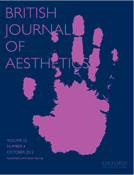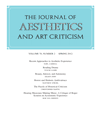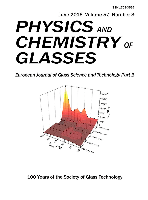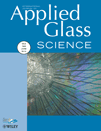
JOURNAL OF GLASS STUDIES
metrics 2024
Advancing Knowledge in Glass as Art and Material.
Introduction
JOURNAL OF GLASS STUDIES, published by the esteemed Corning Museum of Glass, stands as a pivotal resource in the realm of visual arts, particularly focusing on the expansive field of glass studies. With an ISSN of 0075-4250, this journal has been a beacon for scholars since its inception in 1969, offering critical insights and fostering scholarly dialogues that enhance our understanding of glass as both an art form and a material. The journal is currently ranked in the Q2 category of Visual Arts and Performing Arts for 2023 and positions itself 72nd percentile within Scopus rankings, reflecting its influence and reputation among academics and professionals alike. Although the journal is not open access, it provides valuable contributions to the field with specific focus on historical context, technological advancements, and aesthetic compositions related to glass. As a vital platform for research, the JOURNAL OF GLASS STUDIES invites researchers, students, and art professionals to explore its manuscripts, which illuminate the cultural significance and innovation in glass artistry.
Metrics 2024
 0.13
0.13 0.20
0.20 0.30
0.30 15
15Metrics History
Rank 2024
Scopus
JCI (Web Of Science)
Quartile History
Similar Journals

BRITISH JOURNAL OF AESTHETICS
Cultivating Rigorous Research in Aesthetic StudiesBRITISH JOURNAL OF AESTHETICS is a prestigious academic publication focusing on the diverse and intricate field of aesthetics and philosophy. Published by Oxford University Press, this journal has established itself as a leading platform for scholarly discourse since its inception in 1960, boasting an impressive Q1 ranking in Philosophy for 2023. With its commitment to publishing rigorous research and critical analyses, it addresses essential questions encountered in contemporary aesthetic thought, making significant contributions to both theoretical and practical dimensions in the field. While the journal is not open access, its subscription-based model ensures high quality and peer-reviewed content that serves researchers, professionals, and students eager to explore and engage with cutting-edge ideas and discussions in aesthetics. With an extensive archival depth projected through to 2024, BRITISH JOURNAL OF AESTHETICS remains an invaluable resource for anyone committed to the advancement of aesthetic knowledge.

De Arte
Unveiling Contemporary Cultural NarrativesDe Arte is a distinguished journal dedicated to the field of Cultural Studies, published by Routledge Journals, Taylor & Francis Ltd. Since its inception in 1967, the journal has served as a critical platform for scholarly discourse, exploring the intersection of the arts and cultural dynamics. With an Impact Factor reflecting its quality and relevance in the academic community, De Arte is committed to advancing knowledge through rigorous research. It currently holds a Category Quartile ranking of Q3 in Cultural Studies according to the 2023 metrics, and is indexed in Scopus, ranking #1024 out of 1304 in the Social Sciences subcategory. Although it operates under a traditional publishing model, the journal ensures broad access to its insightful publications. The journal invites researchers, professionals, and students to contribute and engage with contemporary cultural issues, making it an essential resource for those invested in the arts and humanities.

Eidola-International Journal of Classical Art History
Bridging the Past and Present Through Art History.Eidola - International Journal of Classical Art History, published by Fabrizio Serra Editore, is dedicated to exploring the intricate connections between classical art and history. With an ISSN of 1824-6192 and an E-ISSN of 1826-719X, this journal stands as a pivotal resource for researchers, academics, and students within the realms of Classics, Visual Arts, and Performing Arts. Despite its recent establishment, having converged in the years 2019 to 2023, Eidola has carved out a place in various category quartiles, specifically achieving Q3 in Classics and Visual Arts and Q4 in History for 2023, indicating its growing influence in the field. Its Scopus rankings (Rank #163/170 in Classics and Rank #638/667 in Visual Arts and Performing Arts) further reflect its contribution to scholarly discourse, albeit in a competitive landscape. Though not openly accessible, the publication prioritizes substantial research, original scholarship, and critical reviews that enhance the understanding of classical art within broader historical contexts. For anyone invested in the dialogues surrounding art history, Eidola presents a vital avenue for engagement and scholarly exploration.

GLASS AND CERAMICS
Pioneering Insights in Ceramics and CompositesGLASS AND CERAMICS is a premier academic journal published by Springer, focusing on the vital fields of ceramics and composites, materials chemistry, and the mechanics of materials. Since its inception in 1956, this journal has contributed significantly to the advancement of knowledge and innovation in these domains, with a commendable 2023 Q3 quartile ranking in its categories. With an ISSN of 0361-7610 and an E-ISSN of 1573-8515, GLASS AND CERAMICS provides a platform for rigorous research and scholarly discussion, catering to a diverse audience of researchers, professionals, and students. Although the journal does not currently offer open access, it continues to disseminate vital insights that drive advancements in the materials science community. The journal’s commitment to high-quality research is underscored by its long-standing publication history and relevance in shaping future materials technology.

GLASS PHYSICS AND CHEMISTRY
Pioneering research in the world of glass materials.GLASS PHYSICS AND CHEMISTRY, published by PLEIADES PUBLISHING INC, serves as a critical platform for advancing knowledge in the fields of glass science, materials chemistry, and condensed matter physics. With a history spanning from 1996 to 2024, this journal has consistently contributed to the understanding and innovation surrounding glass materials, their properties, and applications. Despite its current Q4 categorization in several areas, the journal aims to elevate research quality and engagement, catering to researchers, professionals, and students alike. Although it does not currently offer open access, the journal encompasses peer-reviewed articles, fostering rigorous academic discourse and collaboration. With the perspective of enhancing its visibility and impact, GLASS PHYSICS AND CHEMISTRY plays an essential role in bridging theoretical insights and practical applications, ultimately addressing the evolving challenges in materials science.

JOURNAL OF AESTHETICS AND ART CRITICISM
Fostering Interdisciplinary Dialogues in the ArtsThe Journal of Aesthetics and Art Criticism, published by Oxford University Press, stands as a premier platform for scholarly discourse in the realms of music, philosophy, and the visual and performing arts. Established in 1996 and continuing through 2024, this journal has achieved remarkable recognition, being ranked in the Q1 category across several disciplines, and securing prestigious positions in various Scopus rankings: 29th in Music, 50th in Visual Arts and Performing Arts, and 151st in Philosophy, showcasing its essential contribution to arts and humanities scholarship. While not an open-access journal, its rich repository of articles offers invaluable insights for researchers, professionals, and students alike, fostering a deeper understanding of aesthetics and critical theory. The journal's commitment to interdisciplinary approaches opens pathways for innovative dialogue, making it an indispensable resource for anyone engaged in the study and appreciation of the arts.

Physics and Chemistry of Glasses-European Journal of Glass Science and Technology Part B
Illuminating the Science Behind Glass MaterialsPhysics and Chemistry of Glasses-European Journal of Glass Science and Technology Part B is an esteemed academic journal published by the Society of Glass Technology, strategically located in the United Kingdom. With an emphasis on the intricate relationship between physics, chemistry, and the science of glass, this journal serves as a pivotal platform for researchers, professionals, and students who are passionate about materials science and glass technology. Although it currently holds a Q4 ranking in several key categories, including Condensed Matter Physics and Materials Chemistry, the journal's commitment to advancing knowledge in the field is evident through its inclusive exploration of innovative studies from 2006 to 2024. This journal features a range of open access options, promoting wider dissemination of research findings and enhancing visibility for authors. In a rapidly evolving field, Physics and Chemistry of Glasses plays an essential role in integrating theoretical perspectives with practical applications, thus inviting contributions that advance the understanding of glass materials and their functionalities in contemporary technologies.

Quiroga-Revista de Patrimonio Iberoamericano
Empowering Scholars to Shape the Future of Heritage ConservationQuiroga-Revista de Patrimonio Iberoamericano, published by UNIV GRANADA, is a distinguished open-access journal dedicated to the fields of conservation, museology, and the visual and performing arts. Since its inception in 2012, the journal has provided a platform for scholars and practitioners to disseminate innovative research and critical discussions pertinent to Ibero-American heritage. With a growing impact, evidenced by its category quartiles ranking—Q3 in Conservation and Q2 in both Museology and Visual Arts and Performing Arts—as well as its Scopus rankings, Quiroga serves as an essential resource for researchers, professionals, and students who engage with the complexities of cultural preservation and artistic expression. The journal’s commitment to open access ensures the widespread availability of knowledge, fostering academic dialogue and collaboration within the global community. For inquiries, the journal can be reached at their offices located in Granada, Spain.

International Journal of Applied Glass Science
Unveiling the Future of Applied Glass TechnologyThe International Journal of Applied Glass Science, published by Wiley Periodicals, Inc, is a leading scholarly journal in the field of materials science, particularly focusing on the applications and innovations in glass science. Since its inception in 2010, the journal has served as a vital platform for disseminating high-quality research and advancing knowledge within the community, maintaining a respectable Q2 ranking in the Materials Science (Miscellaneous) category as of 2023. With an ISSN of 2041-1286 and E-ISSN of 2041-1294, it continues to attract a diverse array of manuscripts that explore fundamental and applied aspects of glass technology and its countless applications. Scholars and professionals benefit from the journal’s commitment to transparency and accessibility, even in the absence of an open access model, thereby reinforcing its relevance in an evolving academic landscape. The journal is positioned to be an influential resource for researchers, professionals, and students keen to stay at the forefront of glass science developments.

AMERICAN CERAMIC SOCIETY BULLETIN
Fostering Excellence in Ceramic ScienceAMERICAN CERAMIC SOCIETY BULLETIN, published by the American Ceramic Society, serves as a pivotal publication in the field of ceramics and composites, highlighting research and advancements from 1969 to 1990, and resuming from 1993 to 2019, with a focus on the ongoing developments anticipated in 2023 and beyond. With an ISSN of 0002-7812 and an E-ISSN of 1945-2705, this journal stands out in its category, earning a respectable Q2 rank in the 2022 quartile rankings for Materials Science. Although not Open Access, its content remains essential for researchers, professionals, and students dedicated to exploring innovative materials and their applications. The journal's commitment to disseminating quality research fosters an informed community that drives the evolution of ceramics and composites, ensuring its readers stay at the forefront of this dynamic field.